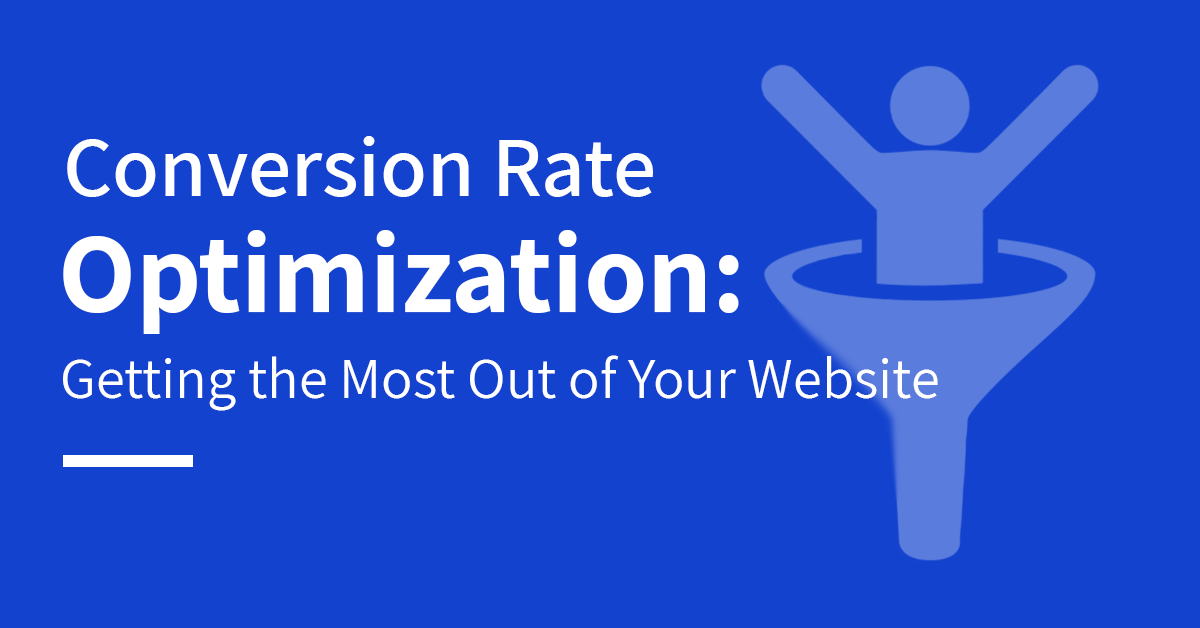Conversion Rate Optimization (CRO): Getting the Most out of Your Website

So, you’ve already got a great digital marketing program in place. You’re driving relevant, qualified traffic to your website. That’s a great start! But in reality, it’s only half the battle. Just because you know that your website is getting more visitors doesn’t mean you really know what they’re doing when they arrive. This is where conversion rate optimization comes in. Conversion Rate Optimization (CRO) is the process of analysing your website and user behavior to generate more conversions for your business.
What is a Conversion?
A conversion is an action you want a user to take on your website. That’s a bit vague, but intentionally so. There are a significant number of actions that can count as a conversion; what matters is what action is important to your business.
For example, if you sell products from your website, your primary conversion is probably a visitor completing a purchase. If you’re a service based business like a landscaping company, you might want to count phone calls as conversions. If you teach dance classes, your conversion may be a completion of a class registration form. It is entirely dependent on your business, your industry, and your website goals.
The Conversion Optimization Approach
Conversion rate optimization is a unique facet of a successful digital marketing strategy. SEO and SEM both focus on optimizing for keywords and driving potential customers to your website based on their search terms. CRO takes a different approach. It aims to make it easier for an interested user to convert on your website. To put it simply, the goal of CRO is to turn more website visitors into customers. A good CRO strategy will improve the ROI across your entire digital marketing strategy as well, as more visitors becoming customers will result in more profit.
For example, suppose you’re an accountant who wants more contact form submissions from your website. You might have an SEO campaign aimed at increasing your rankings for accounting related keywords in your area to help drive traffic. You also might have a PPC campaign showing ads to people searching for accounting services. Adding CRO means analyzing the behavior of these interested users after they’ve arrived on your website. In this case, the goal would be to determine who is completing contact forms, who is not, and why. Maybe your menu structure is confusing and prevents users from finding your contact page. Maybe there aren’t enough calls to action on your website, leaving visitors unsure of where to go. A CRO strategy will aim to address these and any other problems, and develop solutions that result in more forms submitted.
Must-Have CRO Tools
There are a variety of tools that can be used to better understand your website's user experience. Here are a few of our favorites, along with the reasons 360 PSG uses them in our optimization campaigns:
Heat Mapping
A comprehensive heat map can show you where your website’s “hot spots” are. Good heat map software will show you where users are clicking and scrolling to on your website. They can reveal issues such as a call to action being ignored, too much content on a page, or a static element being clicked on too often.
Event Tracking
Integrating Google Analytics event tracking into your website is another great CRO tool. It's a different way to get even more data about users who click on important areas of your website. With event tracking implemented, you can see where the user came from, what page they landed on, when the clicks happened, and other insightful data. You can even track certain important events, such as clicks on a phone number, as conversions in Google Analytics.
A/B Testing
Will a blue button generate more clicks than a red one on your website? A/B testing eliminates the guessing game. A/B & multivariate testing programs will allow you to experiment with different variations of your website’s design and content.
A/B tests can range from very simple to very complex. You can adjust something as small as the location or color of a single button, to as complicated as testing two completely different landing page layouts. You also have the ability to target what specific users are involved in your testing. You can include users who land on a certain page, who fit a certain demographic, or who live in a specific location, among other things. This allows you to show changes in your design to specific segments of users to determine what design features will generate the most conversions. With A/B testing, you’ll never have to wonder if your design is working for you; you can be sure that it is.
Improving Your Conversion Rate
If you think you could have a better conversion rate, there are many things that can be done to help improve it. Sometimes, all you need are some stronger calls to action on your website to guide your users in the right direction. Other times, it can be best to redesign the website to make it more user-friendly in many areas.
It can be hard to make those decisions on your own, and that’s where 360 PSG comes in. Our optimization team will dive deep into your website’s user experience and analytics. We combine our approach of SEO and CRO into one comprehensive optimization campaign, and we’ll work together to make sure you have a website you love that also turns visitors into customers.
Ready to start getting the most out of your website? Contact 360 PSG today.


